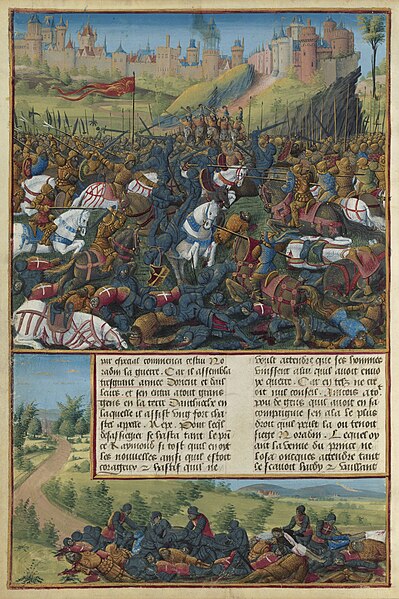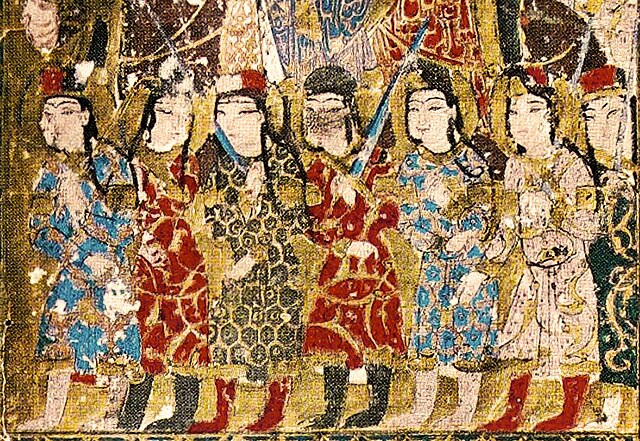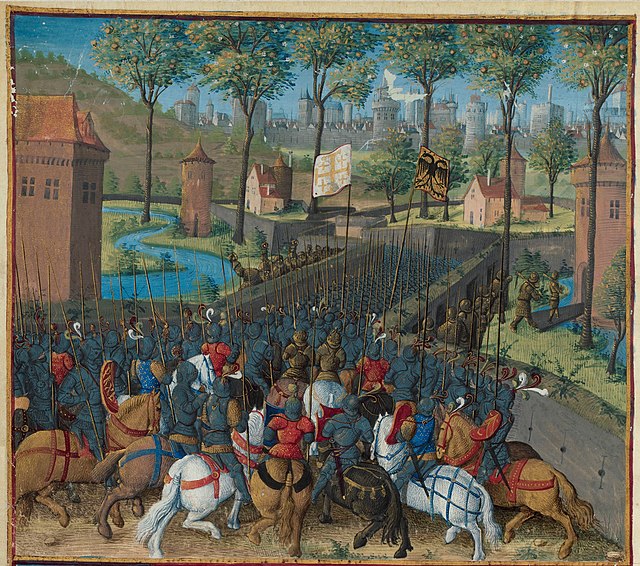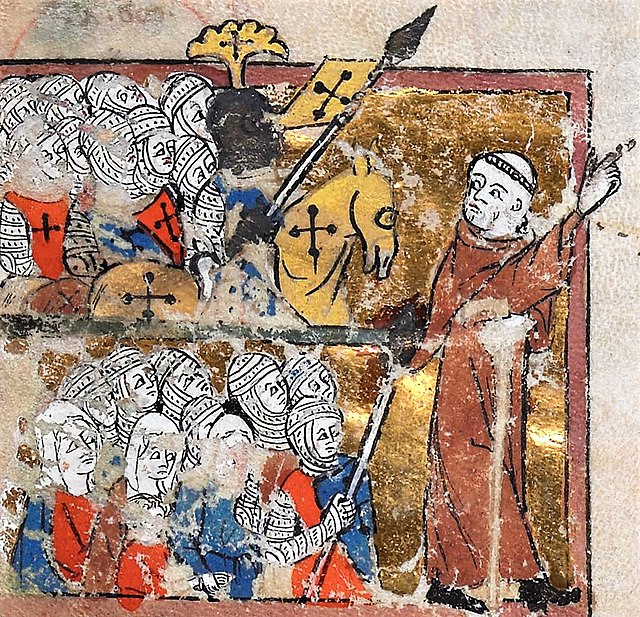The Second Crusade (1147–1150) was the second major crusade launched from Europe. The Second Crusade was started in response to the fall of the County of Edessa in 1144 to the forces of Zengi. The county had been founded during the First Crusade (1096–1099) by King Baldwin I of Jerusalem in 1098. While it was the first Crusader state to be founded, it was also the first to fall.
Illustration of the Battle of Inab, by Jean Colombe from the Passages d'outremer by Sébastien Mamerot, c. 1473–1474.
St Bernard in stained glass, from the Upper Rhine, c. 1450
The Siege of Lisbon by D. Afonso Henriques by Joaquim Rodrigues Braga (1840)
Zengid soldiers, armed with long swords and wearing Turkic military dress: the aqbiya turkiyya coat, tiraz armbands, boots and sharbush hat. Manuscript Kitab al-Aghani, 1218–1219, Mosul.
The Crusades were a series of religious wars initiated, supported, and sometimes directed by the Christian Latin Church in the medieval period. The best known of these military expeditions are those to the Holy Land in the period between 1095 and 1291 that had the objective of reconquering Jerusalem and its surrounding area from Muslim rule after the region had been conquered by the Rashidun Caliphate centuries earlier. Beginning with the First Crusade, which resulted in the conquest of Jerusalem in 1099, dozens of military campaigns were organised, providing a focal point of European history for centuries. Crusading declined rapidly after the 15th century.
14th-century miniature of the Second Crusade battle from the Estoire d'Eracles
The Siege of Damascus (1148) as depicted in the Passages d'outremer, c. 1490
The Church of the Holy Sepulchre in Jerusalem. In 1071, Jerusalem was conquered by the Seljuk Turks.
Miniature of Peter the Hermit leading the People's Crusade (Abreujamen de las estorias, MS Egerton 1500, Avignon, 14th century)








